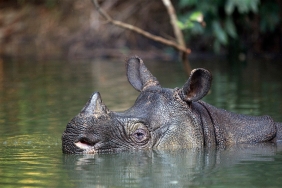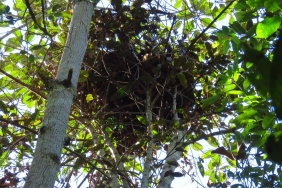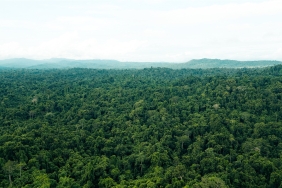TNBBS BUFFER VILLAGE COMMUNITY PARTICIPATES IN RPJMDES PREPARATION TRAINING
By: Hijrah Nasir (Communication and Education Officer WWF-Indonesia Southern Sumatra Program)
Every citizen has the right to take part in development efforts. This active participation of the community is key in the implementation of sustainable and equitable development. Sustainable management of natural resources requires the role of the community as both owner and manager. For this reason, it must be accommodated in the Village Medium-Term Development Plan.
The Village Medium-Term Development Plan (RPJMDes) is a village planning document for a period of six years as stipulated in Permendagri 114/2014 on Village Development Guidelines. This Village Plan is expected to be in line with sustainable and participatory development practices. Therefore, on November 20 - 24, 2017, WWF conducted the Village Community Development Cadre Training which took place at Ngarip Village Hall, Ulubelu Sub-district, Tanggamus Regency, Lampung Province.
This training was attended by community representatives from several WWF-assisted villages which are buffer villages of Bukit Barisan Selatan National Park, including Ngarip Ulubelu Village, Tanggamus Regency as well as Trijaya Village, Sukajaya Village, and Tebing Rambutan Village, Kaur Regency, Bengkulu Province. The training was also attended by WWF staff and partners including KPHL Batutegi and KPHL Kota Agung Utara, Nestle, Rumah Kolaborasi, Srikandi Group, Gapoktan Margorukun Group, and Field School facilitators from Bengkunat, Pesisir Barat. This activity was facilitated by Pietra and Rizal from WWF Indonesia and Sugiyanto.
Although it is believed that the RPJMDes provides an opportunity for villages to determine the direction of their development in a more independent and participatory manner, it is realized that there are still several things that need to be addressed, including the lack of community participation in the preparation, planning, implementation, and supervision, as well as the assumption that the RPJMDes is only a formality so there is no need for correct procedures and substance. Therefore, this training is expected to provide the necessary skills for village officials to take on the role of facilitator in the preparation of the RPJMDes in their respective villages.
"In making village planning, it is necessary to know the conditions and needs in the village. From this information, we can set priorities. Village priorities can be found when there is an ongoing discussion with the village community. Village development in this RPJMDes must accommodate the availability of basic needs, such as health (village clinic), education (pre-school, kindergarten), and population (Posyandu) for maternal and child health and nutrition, provision of facilities and infrastructure, and business/economic development.
In addition, there are empowerment activities to increase the capacity of human resources which can be in the form of training, such as farming business training, RPJMDes training, as well as activities to fulfill women's and children's rights and civil rights." Said Pietra Widiadi as the facilitator in this training.
In this training, one of the tools used is the Sustainable Livelihood Assessment (SLA) which contains 5 capitals, namely natural, human resources, infrastructure, funds, and social capital. There are 2 factors that affect the achievement of the 5 capitals, including political factors (policies) and shock (natural disasters). Political factors can be influenced by leadership succession, participation and donations. In designing the RPJMDes, we must consider these 3 things to support sustainable village development. By using these 5 capitals, we can explore the problems and root causes faced within the village and find solutions from the potential available in the village.
In preparing a good RPJMDes, there must be communication, knowing the objectives, unifying thoughts, and focusing on the common interest. RPJMDes seeks to change the mindset of the community which leads to changes in behavior. To achieve this, we need to explore the problems and potential of the village. The tools used to formulate a sustainable RPJMDes include Venn diagrams/relationship diagrams/relationships between actors/relationship diagrams between institutions, namely identifying institutions in the village and the relationships between these institutions; seeking information on the daily activities of family members in the village for 24 hours; preparing a seasonal calendar to identify activities carried out in the village or major events that occur in the community; seeking information on trends in changes in natural resources or the environment (forests, timber, rivers, coffee, water, tigers, etc.); conducting a village walk (village transect) that contains information on the condition of vegetation, social facilities, assets owned, etc.; and making a village social map, which is a map of places that are considered important in the village.
Interestingly, participants were invited to gather information directly in the field by interviewing community representatives in Ngarip village. This was part of the RPJMDes drafting simulation. In this training, the community representatives involved were from the buffer zone villages of Bukit Barisan Selatan National Park. So that Village Development Plans that pay attention to environmental sustainability are very basic in order to support the implementation of environmentally friendly and sustainable development in the buffer zone of the National Park.





